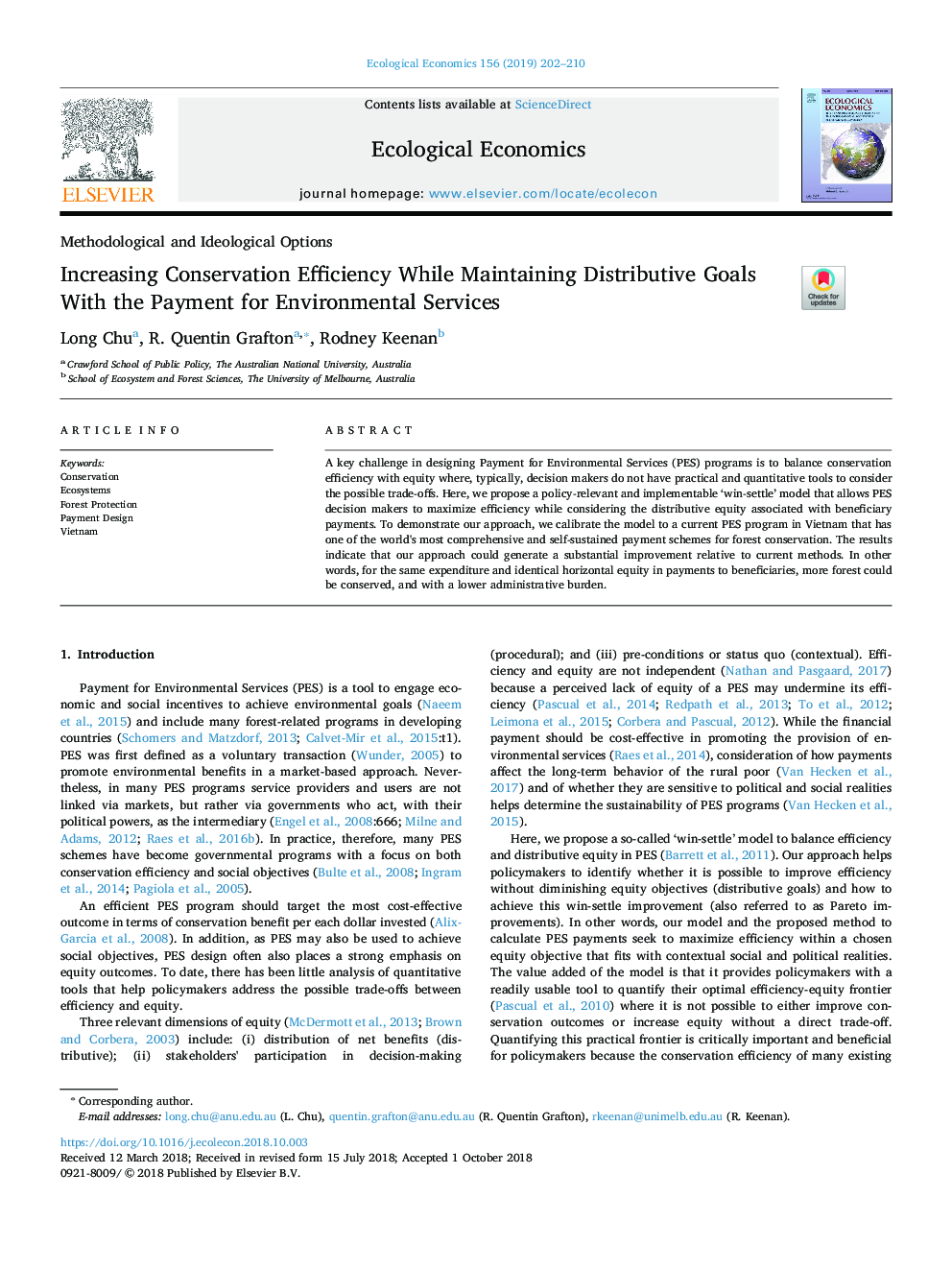| Article ID | Journal | Published Year | Pages | File Type |
|---|---|---|---|---|
| 11029801 | Ecological Economics | 2019 | 9 Pages |
Abstract
A key challenge in designing Payment for Environmental Services (PES) programs is to balance conservation efficiency with equity where, typically, decision makers do not have practical and quantitative tools to consider the possible trade-offs. Here, we propose a policy-relevant and implementable 'win-settle' model that allows PES decision makers to maximize efficiency while considering the distributive equity associated with beneficiary payments. To demonstrate our approach, we calibrate the model to a current PES program in Vietnam that has one of the world's most comprehensive and self-sustained payment schemes for forest conservation. The results indicate that our approach could generate a substantial improvement relative to current methods. In other words, for the same expenditure and identical horizontal equity in payments to beneficiaries, more forest could be conserved, and with a lower administrative burden.
Related Topics
Life Sciences
Agricultural and Biological Sciences
Ecology, Evolution, Behavior and Systematics
Authors
Long Chu, R. Quentin Grafton, Rodney Keenan,
